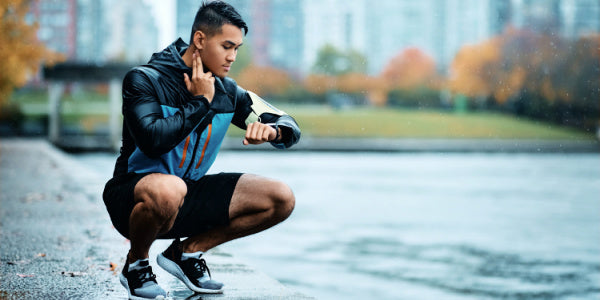
"How does cholesterol work?" "Will high cholesterol increase my risk of heart disease?” "Does eating eggs raise cholesterol?"
Common questions wondered and considered to take protective measures of the heart.
So, do you know the truth about cholesterol? We are explaining how cholesterol works and debunking common myths.
Cholesterol is a waxy substance found in the body's cells and needed for a multitude of functions in the body. These include the production of:
• Vitamin D, a vitamin essential for bone support, mental health, amongst the many benefits and functions
• Vital hormones such as estrogen, progesterone, aldosterone, and cortisone
• Bile, the greenish-yellow secretion produced from the liver. It enhances the absorption of fats and fat-soluble vitamins A, D, E, and K.
The liver is primarily responsible for cholesterol production and helps facilitate its circulation throughout the body.
Dietary cholesterol is sourced from animal products, including eggs, chicken, pork, beef, milk, yogurt, and cheese. Fruits, veggies, legumes, and other plant products are naturally cholesterol-free.
Cholesterol is also fat-soluble, meaning it is unable to dissolve in the blood. To navigate throughout the blood, it requires a transporter called a lipoprotein which functions as a carrier vehicle.
All cholesterol is the same, but the lipoproteins vary. There are primarily two types of cholesterol lipoproteins, including low-density (LDL) and high-density lipoproteins (HDL). Very low-density lipoprotein (VLDL) that carries triglycerides is another type worth noting.
LDL Cholesterol
Low-density lipoprotein (LDL) or "bad" cholesterol relates to plaque build-up in excess amounts.
A high level of plaque on blood vessel walls is known as atherosclerosis, a condition in which arteries become hardened and clogged. This can result in a blood clot and cause a heart attack or stroke.
An optimal LDL range is a reading of less than 100 milligrams per deciliter (mg/dL).
HDL Cholesterol
Known as the "good" cholesterol due to its ability to remove the "bad" kind from artery walls. HDL cholesterol takes LDL cholesterol to the liver where it can be broken down and further excreted from the body.
WebMD warns HDL levels less than 40 mg/dL is not good and the higher the level the better. A recommended HDL cholesterol level is 60 mg/dL or higher.
VLDL Cholesterol & Triglycerides
Very-low-density lipoproteins (VLDL) carry triglycerides, fats carried in the blood from foods consumed. The fat is shown to circulate in the blood when the body needs energy between meals.
Excess calories, alcohol, or sugar in the body are converted into triglycerides and stored in fat cells throughout the body.
Triglyceride levels should be 150 mg/dL or lower.
Total Cholesterol
Total cholesterol is the total amount of cholesterol in the blood. It includes both HDL and LDL levels.
Total cholesterol levels should be 200 mg/dL or lower. However, if considered to be high, it is important to consider if HDL or LDL caused the elevation.
Abnormally high blood cholesterol levels can cause fatty deposits to develop in your bloodstream. These deposits can hinder blood flow and increase the risk of a stroke, heart attack, and even early mortality.
A risk factor is something that increases the chance of developing a disease, high cholesterol and heart disease included.
Many risk factors of high cholesterol cannot be changed, including family history, age, and gender. However, some risk factors can be modified and lower the risk of high cholesterol and heart disease.
1. Smoking
Smoking is one of the leading risk factors for high cholesterol, as cigarette smoke can damage the walls of blood vessels.
Damaged blood vessel walls are more likely to accumulate fatty deposits that can lead to restricted blood flow. Another often unknown and unintended consequence of smoking is that it can reduce HDL, or "good" cholesterol.
2. High Waist Circumference
The risk of high cholesterol increases with high waist circumference with differences in risks with gender.
Men who have a waist circumference of 40 inches or more increase their risk of heart disease. For women, their risk increases with a waist circumference of 35 inches or more.
3. Obesity
Having a body mass index (BMI) of 30 or higher is a risk factor for high cholesterol. In comparison, a BMI that falls between 18.5 and 24.9 is regarded as normal.
Opportunely, one does not need to lose a significant amount of weight to improve cholesterol levels. Losing as little as 5 to 10 percent of total body weight can improve total cholesterol and the LDL:HDL ratio.
4. Diabetes
People living with diabetes are more prone to high cholesterol levels, and managing blood sugars can be helpful to reduce such risk.
Diabetes can decrease good cholesterol and increase bad cholesterol and triglyceride levels, a condition commonly referred to as diabetic dyslipidemia. The causes of diabetic dyslipidemia include a defect insulin or hyperglycemia (excess blood glucose).
Elevated blood sugar can also damage the lining of the arteries, which may lead to plaque buildup in the arteries.
5. Unhealthy Lifestyle
An unhealthy lifestyle can majorly impact cholesterol levels. Individual factors include factors related to diet, physical activity, and stress.
A diet rich in overly processed foods, including those laden in sugar and saturated and trans fats, can cause abnormal lipids. While dietary cholesterol was thought to directly impact blood cholesterol, ongoing research shows that is not entirely the case. (More on that right below!)
A sedentary lifestyle and lack of physical activity can also increase the risk of high cholesterol. Too much stress has shown to do the same.
Keeping cholesterol within the recommended ranges is important to facilitate vital functions in the body. It lowers the overall risk of heart disease as well.
Despite the benefit of cholesterol, there are common misconceptions regarding the nutrient, including these top 5 myths we are debunking.
1. Eating eggs increases blood cholesterol levels.
Given up those beloved breakfast eggs each morning? Perhaps the most common cholesterol myth is eating eggs inherently increases cholesterol levels.
It was once believed that giving up egg yolks should be practiced to reduce total cholesterol levels. However, the newest 2015-2020 Dietary Guidelines for Americans (DGAs) sets no target on cholesterol intake. Saturated and trans fats and high-sugar diets are known to increase blood cholesterol rather than dietary cholesterol itself.
It is still important to monitor blood cholesterol levels and speak with a doctor to identify a safe target. Working with a dietitian can help make individual nutrition recommendations based on needs and requirements as well.
2. Eating cholesterol results in heart and arterial disease.
This compares to the belief described above. Like eggs, natural suppliers of cholesterol have a seat in a nutritious diet without ongoing worry of poor heart health.
Besides, animal products also offer much more than cholesterol – iron in beef, calcium in milk, and zinc in shellfish. Like any food, it is important to stick to the concept of moderation and adhere to portion sizes.
The American Heart Association's (AHA) newly updated diet and lifestyle recommendations align with the most recent DGAs. One should limit saturated fat and trans fat to reduce blood cholesterol.
3. A low-fat diet is the best kind of diet.
There is this general misconception that eating fat contributes to gaining body fat. Although it certainly can if choosing poor quality and consumed in excess, the body needs fat for day-to-day functions.
Dietary fat is needed in a well-balanced diet, particularly the "healthy fats" known as monounsaturated, polyunsaturated, and omega-3 fatty acids. These particular fats can do wonders for the body, including:
• Control hunger levels
• Promote a healthy metabolism
• Protect vital organs
• Lower the risk of heart disease
What's more, often commercially produced "low-fat" foods, such as low-fat dressings and yogurts, often contain excess sugar and additives.
It is also worthy to mention there are situations that may justify a low-fat diet. For instance, low-fat diets are often prescribed to manage diseases of the gallbladder or pancreas and other malabsorption conditions.
Always speak with a doctor and dietitian to help determine dietary fat needs and recommended sources.
4. Cholesterol is only concerning in middle age.
Major risk factors for heart disease and high cholesterol include age. However, cholesterol is important to consider throughout the entire lifespan, including in childhood.
For instance, familial hypercholesterolemia is a genetic disorder that causes high LDL cholesterol. The condition begins at birth and can lead to heart attacks at an early age.
Monitoring cholesterol at a young age is especially essential if children are at risk for high cholesterol. This includes a family history of high cholesterol.
The American Heart Association recommends all adults 20 and older have their cholesterol checked every four to six years.
5. Medication is the only way to reduce cholesterol.
Despite the effectiveness of cholesterol-lowering statins, medication is not the only way to reduce cholesterol. Making lifestyle choices and changes can reduce cholesterol levels.
Diet is one of the most effective methods to reduce cholesterol, particularly when including more nutrient-dense foods such as:
• Whole grains
• Fruits and veggies
• Lean and plant-based proteins
• Low-fat milk and dairy products
• Healthy fat sources
Partaking in regular physical activity can further reduce LDL cholesterol, especially in coordination with diet and weight management. There are additional beneficial effects on insulin resistance, blood pressure, serum triglycerides, and HDL cholesterol.
A balanced diet paired with increased exercise can help those successfully lose weight and manage cholesterol. Smoke cessation and stress management are valuable cardio-protective measures as well.
Ultimately, all can benefit from making healthy lifestyle choices to lower heart disease risk and improve overall health at any age.
One should also talk to a doctor for sound medical advice to determine heart disease risk. This often includes a full physical exam that considers age, medical history, a blood test, and other factors.
References:
Carson JAS, Lichtenstein AH, Anderson CA, et al. Dietary Cholesterol and Cardiovascular Risk: A Science Advisory From the American Heart Association. Circulation. 2020;141(3). doi:10.1161/cir.0000000000000743.
LDL: The "Bad" Cholesterol. MedlinePlus. https://medlineplus.gov/ldlthebadcholesterol.html. Published April 18, 2019.
Dehghan M, Mente A, Rangarajan S, et al. Association of egg intake with blood lipids, cardiovascular disease, and mortality in 177,000 people in 50 countries. The American Journal of Clinical Nutrition. 2020. doi: 10.1093/ajcn/nqz348







